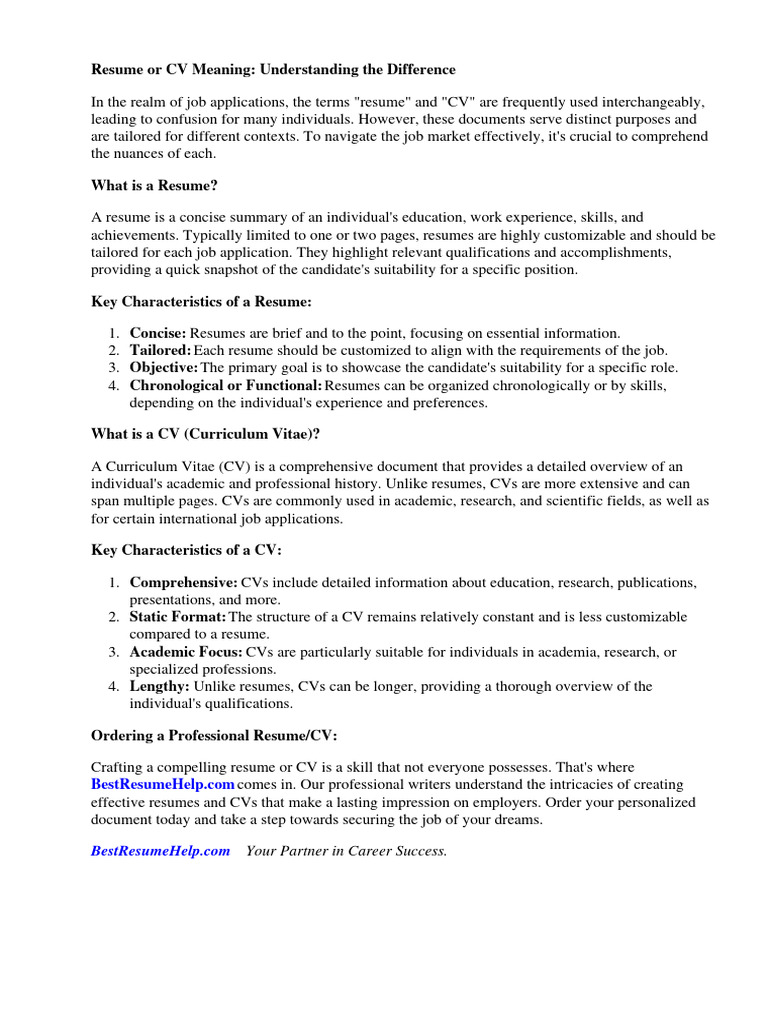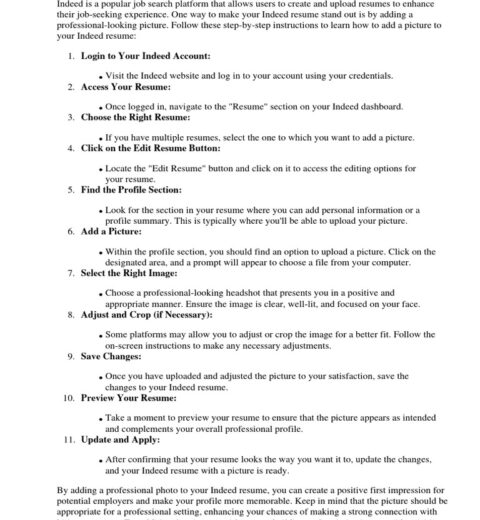When embarking on a job search, one often encounters the term “CV” or “curriculum vitae,” particularly in contexts that extend beyond traditional American job applications. This term, along with its abbreviation, is widely recognized across various global landscapes, often leading to confusion for job seekers who may be unfamiliar with its broader implications. Understanding what a CV is in contrast to a resume, particularly from an international perspective, is crucial for applicants navigating today’s competitive job markets.
The term “curriculum vitae” derives from Latin, meaning “course of life.” It effectively encapsulates the diverse tapestry of one’s professional journey, thereby distinguishing it from a standard resume. In many countries, particularly in Europe, academia, and the medical field, a CV is the preferred document for job applications. It presents an exhaustive overview of a candidate’s education, professional experience, skills, publications, affiliations, and other pertinent achievements.
In contrast, resumes are typically concise, often limited to one or two pages, and tailored to specific job openings. This brevity allows applicants to highlight only the most relevant experiences and skills that align with the job description. The delineation between these two documents lies not merely in length, but in the depth and breadth of information conveyed. Thus, comprehending this distinction is paramount for those seeking employment in various geographical or professional contexts.
Globally, different regions have their own expectations regarding the content and structure of a CV. In the United States, for instance, a CV is generally utilized when applying for academic, research, or medical positions. This document often includes sections such as an objective statement, detailed educational background, a comprehensive list of scholarly work, teaching experience, and professional affiliations. The document may stretch beyond the conventional length of a resume, often extending beyond three pages, especially for seasoned professionals with extensive accomplishments.
Conversely, in the United Kingdom, a CV tends to embrace a more straightforward approach, often emphasizing personal details, such as contact information and a personal statement, before diving into employment history and education. British CVs may forgo the extensive coverage of academic papers or grants unless specifically relevant to the position sought.
In Australia and New Zealand, the term CV is often used interchangeably with a resume, despite certain intrinsic differences. Australian CVs typically underplay personal details such as date of birth or marital status, both to streamline the document and to comply with anti-discrimination laws. Such variations underscore the need for prospective job seekers to tailor their application materials to fit regional norms and expectations.
Asia presents an equally diverse landscape where the understanding of CVs and resumes can vary significantly based on the country. In Japan, for instance, job seekers may use a standardized format, known as “rirekisho,” which emphasizes chronological employment history and personal achievements but often limits personal expression that might be expected elsewhere. Meanwhile, in countries like India, candidates might provide a blend of detailed CV-like information while maintaining a succinct format akin to a resume, often emphasizing educational qualifications and professional skills pertinent to the position.
The advent of globalization has led to an increased interchange of job application formats, creating both opportunities and challenges for candidates. In contemporary job markets, particularly in multinational corporations, job seekers might encounter recruiters who accept both resumes and CVs, further complicating the application process. To navigate these waters effectively, applicants must remain acutely aware of the nuances involved in developing each document. Tailoring includes not just the length of the document but also the tone, language, and type of information succinctly presented.
In addition to regional expectations regarding CVs, industry-specific differences also play a crucial role. For instance, a CV crafted for an academic position is likely to emphasize educational credentials and scholarly contributions, while a CV in the tech industry might pivot towards showcasing technical proficiency, project involvement, and innovative contributions to previous companies. The strategic selection of achievements tailored to the field can significantly enhance a candidate’s prospects.
The nature of the job market continues to evolve in response to technological advancements and shifting employment paradigms. The integration of digital platforms has precipitated the emergence of online CVs and digital profiles, such as LinkedIn. These platforms allow candidates to display their professional journey interactively, often creating opportunities for networking that extend beyond what traditional CVs could offer. However, the underlying principles of clarity, relevance, and personalized representation remain core to any effective job application, whether in traditional or digital formats.
In conclusion, understanding the term “CV” within the intricate tapestry of global job application processes is imperative for today’s job seekers. It requires a nuanced appreciation of geographical, cultural, and professional expectations. A well-informed approach to crafting a CV or resume not only enhances employability but also reflects an applicant’s adaptability and awareness of global market trends. Familiarity with these distinctions empowers candidates to present themselves compellingly, ensuring they capture the attention of prospective employers.




